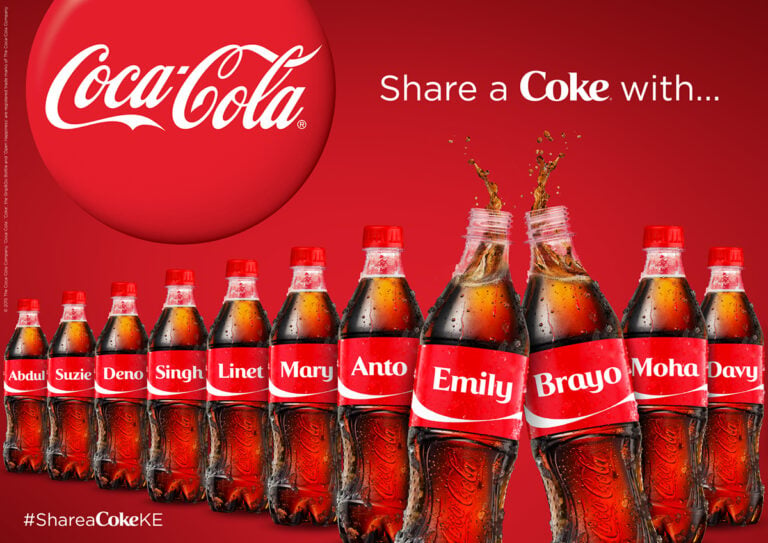Viral marketing is a strategy aimed at spreading advertising with minimal intervention from the advertiser.
The main principle is to distribute content organically to ordinary users. The essence of this concept is to create content that makes people want to pass it on, similar to spreading an infection.
The term “viral marketing” was coined by Harvard Business School professor Jeffrey Rayport in 1996. Despite this, similar methods of attracting attention existed before; they simply did not have a generally accepted name due to the diversity of technologies and techniques.
One influential example of a viral marketing campaign is the promotion of Marcus Montana’s Sydney concerts. Advertisers strategically placed “Marcus Is Coming” posters on the exterior walls of buildings. This caused widespread debate in the local media and among the public. It’s interesting to note that this happened in 1989, seven years before the term “viral marketing” was first mentioned.
Features of viral marketing: advantages and disadvantages
Advantages of viral marketing:
- Viral marketing operates on the basis of organic distribution, minimizing the need for large financial investments in advertising. The initial effort starts a process that continues to operate autonomously, eliminating the need for ongoing investment;
- high-quality viral campaigns encourage people to actively share advertising content, increasing overall audience loyalty. Product information through trusted sources leads to increased trust in the brand;
- Unlike traditional limited-time advertising, viral marketing remains effective over time. It is capable of providing consistent visibility and brand awareness;
- This strategy allows you to flexibly advertise products or services that may face limitations in traditional advertising channels.
Disadvantages of viral marketing:
- Viral marketing may not contribute to overall business growth due to insufficient management and guidance of customers through the sales funnel;
- maintaining interest in a brand requires constant creation of fresh and exciting content. Failure to do this can lead to the rapid oblivion of the brand;
- the success of a viral campaign is highly dependent on instant social recognition such as likes and shares, which can be unpredictable;
- unlike traditional advertising, viral marketing is not so easy to control and suspend in case of negative reactions;
- evaluating the effectiveness of viral marketing presents certain difficulties, requiring significant resources to assess brand awareness.
Goals and objectives of viral marketing

However, the main goal of viral marketing is to expand the reach of users who have had a positive experience with a product or service. Influencers are often used to encourage content sharing.
However, the main impetus for the viral effect comes not so much from influential individuals, but from ordinary users on networks. Many studies confirm that ordinary users on social networks play an important role in the dissemination of content.
The main goal of a viral marketing campaign is to achieve maximum exposure among interested users, stimulating their engagement.
Viral marketing methods
1. Word of mouth advertising
This method is based on the transfer of information about a product or service from one person to another without external stimuli. It has a low cost of customer acquisition, but is difficult to control and depends on the quality of the products or services provided.
2. Rumors
Using rumors allows you to quickly spread information about a company or product. They often contain slightly distorted but emotionally rich details. Can cause both positive and negative consequences.
3. Scandals
This method aims to evoke strong emotional reactions in consumers. However, despite the potential to attract attention, misuse can cause negative consequences.
4. Influencers
Famous personalities advertise a product or service. Although this method requires financial investment, it can be used in conjunction with word of mouth to increase impact.
5. Paid launch of viral content
This method involves creating viral content and distributing it through targeted or contextual advertising. Provides initial exposure, but does not always provide content moderation.
These are just some of the various approaches to viral marketing that can complement each other or be used in combination. The choice of method depends on the target audience and the creative approach that is planned to be implemented.
Viral content distribution channels
The choice of channels for distributing viral content is based on several key factors:
- The choice of platform to suit the interests of users is decisive. A successful viral beer video posted to an audience interested in healthy living may not be effective. Therefore, taking into account the interests of users when choosing a platform is the most important factor;
- Audience segmentation by age is a common practice. For example, social media such as TikTok attracts a younger audience, while platforms like Odnoklassniki are preferred by older generations. Understanding these differences helps you choose the most appropriate content platforms;
- Adapting to your audience’s habits is key. For example, using email newsletters can be effective if your audience prefers this way of interacting with content.

Social networks: reactions and reposts in the context of viral content
In the realm of viral content, two main technologies play a key role: reactions and reposts. Reactions such as likes help increase the reach of content. Encouraging organic reactions such as likes is beneficial for your content. However, explicit calls for likes on most social media platforms can cause negative reactions.
A much more effective way is reposting. This is where your video or post gains visibility among users who may not have previously been familiar with your brand. Content typically achieves virality when it generates a significant number of shares among users. The more people who share your content, the higher the likelihood of reaching a larger audience.
Using mailings to launch a viral effect
In this scenario, the viral effect is activated by users forwarding emails. An example of such a strategy is “chain letters” – messages that require forwarding to avoid some unfavorable situation, and which have been circulating for a long time. In the modern Internet era, launching such emails has become easier: offering a utility and encouraging messaging among friends is a viable approach.
Choosing the right channel depends on your target audience and intended impact. In addition, taking into account the specifics of your business is important. For example, if you own a small shawarma shop in a provincial town, a national surge in shares may not bring significant benefits. In this case, a local and targeted strategy may be more effective.
Methods for launching viral content
In the process of launching viral content, there are several methods that can be used:
- Create content that can inspire users to voluntarily share. It could be something funny, interesting, or something that evokes strong emotions. However, keep in mind that using this approach to promote services requires subtlety and an understanding of the relevance of the humor or content to your brand.
- Offering rewards for reposting content. This method works well for promoting services and information products. However, you should be careful about attracting those who are only interested in the awards and not in your brand.
- Causing attention through controversial campaigns. This method can be adapted to promote various goods and services, but it should be remembered that an ineptly organized scandal can negatively affect the brand’s reputation.
- Using paid channels to distribute content, such as contextual advertising or targeted ads. They can effectively complement the above methods. It is also important to consider offline advertising.
Ways to spread viral content on major platforms
VK reposts
Creating content that can encourage shares VK includes memes or images that motivate users to share the content. VK reposts are sent via private messages by default, which can further increase user coverage.

Email newsletter
The ability to distribute content through email newsletters can significantly increase its reach, creating a viral effect similar to standard email. However, to be effective, significant effort must be put into content creation.
YouTube – using hosting tools
Optimizing content on YouTube includes using appropriate tags, long descriptions to increase discoverability in search results, and strategies to increase audience reach.
Viral content on YouTube
This type of content on YouTube includes humorous or socially relevant videos in order to encourage sharing among users. An important goal is to create initial momentum, often achieved by seeding videos on other social media platforms.
These strategies represent only part of the mechanisms for launching viral marketing. A combination of multiple technologies is often used to share their benefits, increasing overall impact and audience reach.
Conclusions
The question of the need for viral marketing is important for every business. Here are a few aspects that will help you decide whether your business needs it:
- Determine how active your target audience is on social networks. If they are active and often share content, then viral marketing can be effective;
- if you have products or services for which traditional advertising methods are limited, then viral marketing can be a valuable tool;
- consider how open your audience is to new and non-standard content formats. The youth audience is often more inclined to innovation;
- It is important that the content is consistent with the overall image and values of your brand. It should be unique enough to attract attention, but should not conflict with the company’s core goals and values;
- Be prepared to measure the results of your viral campaign. This will allow you to understand how effective it is for your business and help you determine your next steps.














